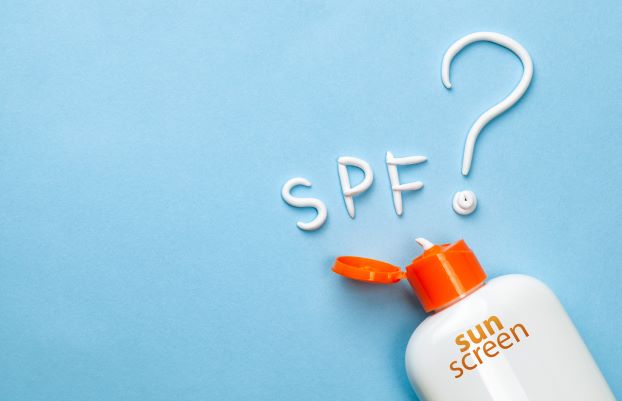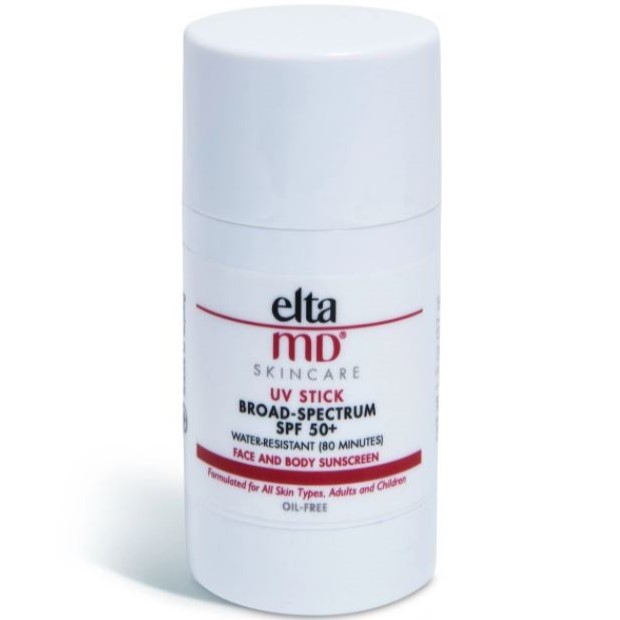If you’re going to be spending time outdoors for the 4th of July, we hope you’ll be spending some time applying your sunscreen properly. Your skin’s health and youthful appearance depend on it! We all want to have fun and spend time with friends and loved ones, but this year, your July 4th celebration will probably be a little different. In the wake of the coronavirus (COVID-19) pandemic, many people are determining how to social distance, wear masks, and take other precautions while still celebrating the holiday. While you’re safety planning for your whole body health, add a sunscreen and sun protection strategy to your plan! One of the things people struggle with when practicing good sun safety seems like it shouldn’t be a problem at all – interpreting the sunscreen bottle. Sunblock packaging makes all kinds of claims, and it can be confusing to figure out what the information means and whether or not it matters. By learning some basics about the information on sunscreen bottles, you can be more prepared for your next beach day or July 4th celebration. In this blog, we will take a closer look at your sunscreen label to help you understand what you’re looking at before you buy it.
Do I really Need to Wear Sunscreen?
The short answer is yes. The long answer is also yes because you should be wearing a broad-spectrum sunscreen with an SPF of at least 30 every single day. In addition to protecting skin from short term damage like sunburns, sunscreen is also essential to prevent long term skin health concerns, including signs of aging and an elevated risk for skin cancer.
Sunblock and Sunscreen Application Types
When it comes to sunscreen and sunblock, the application types are all effective if used properly, so deciding what type to use is up to you. Whether you choose a traditional sunblock lotion or cream, a spray-on sunscreen, sun sticks, or powders, you need to apply enough to completely cover your exposed skin and reapply at least every two hours. So, choose the product that you are most likely to use consistently and as directed. EltaMD UV Stick Broad-Spectrum SPF 50+ is a convenient on-the-go sunscreen.
The Front of the Bottle
On the front of your sunscreen bottle, you’re going to see a lot of information. Below, we’ve explained what that information means and how it affects your sun protection plan.
Sunblock vs. Sunscreen
There actually is a difference between sunblock and sunscreen. In common usage, including in this blog, people use the two words interchangeably to refer to products that protect skin from burns and sun damage. The difference between the two is how they protect your skin. Sunblock creates a physical barrier between the sun’s rays and your skin. Sunscreen is made from chemicals that absorb and transform UVA and B rays before they reach your skin. Products that are correctly labeled as sunblock are typically physical blocker products and sunscreens are chemical sun protection products.
Sun Protection Factor (SPF)
You’ve probably heard SPF and seen it on bottles, but few people know what it means. Sun Protection Factor – SPF – is the scale used to measure how effective your sunblock is at protecting you from UV rays. The calculation behind SPF is simple. If your skin without sunscreen would begin burning after ten minutes, using a sunscreen with an SPF of 15 should give you 150 minutes of protection. There are a few things to keep in mind related to SPF. First, SPF only refers to protection from UVB rays. These are the rays that lead to sunburns and contribute to most skin cancers. However, even the highest SPF sunscreens do not necessarily prevent UVA damage, which is the major contributor to skin aging. Additionally, sweat, water, amplified and reflected sun rays, and other conditions can further reduce the efficacy of sunscreen long before the SPF should wear off.
Finally, some people can start to burn after a minute or less, meaning an SPF of 30 would only give you 30 minutes of protection. It’s easy to hear the way that SPF is determined and use it to justify going longer without reapplying your sunscreen. However, everyone is different, so the best practice is to use an SPF 30 or higher sunscreen, especially if you’re fair-skinned, and reapply at least every two hours. If you’re ever in doubt, talk to your dermatologist to create a specific plan.
Broad Spectrum
Broad-spectrum means that a sunblock or sunscreen will protect against both UVA and UVB rays. In addition to ingredients that offer an SPF of 30 or higher, broad-spectrum sunscreen products are effective in preventing the long-term damage associated with UVA sun exposure, including premature aging. It is always recommended that people use a broad-spectrum sunscreen with an SPF of at least 30.
Sweat & Water Resistant vs. Proof
The Food and Drug Administration (FDA) regulates the claims that sunscreen manufacturers can make about how effective these products are when exposed to sweat and water. In the past, FDA regulations were less strict, and sunscreen manufacturers were able to make all kinds of claims about water resistance with very little evidence to support these claims. In the last 10 years, the FDA determined that there is no such thing as sweatproof or waterproof sunblock. Instead, products that meet certain criteria can be marketed as sweat and water resistant up to 40 or 80 minutes. If your sunblock is labeled as sweat and water resistant, you should be able to find detailed information about whether it is a 40 or 80 minute sunscreen somewhere on the packaging. Typically, it’s recommended that, when sweating or in the water, people should reapply sunscreen every hour instead of every two hours.
The Back of the Bottle
While the front of the bottle offers a lot of descriptive information that is motivated by attracting potential buyers and making sales, the back of the bottle is where you’ll find the facts, including ingredient lists and application instructions. Pay careful attention to the information on the back of the sunscreen bottle and use these products as directed.
Common Ingredients in Physical Sunblock
Physical sunblock uses ingredients that block out the sun’s UV rays, reflecting it away before it damages the skin. Some of the active ingredients in sunblock include titanium dioxide and zinc oxide. Physical sunblock is great for people with dry or sensitive skin as well as being the recommended product for infants and expectant mothers. Sunblock is not as effective as chemical sunscreen if you’ll be in the water or sweating.
Common Ingredients in Chemical Sunscreens
Chemical sunscreens are better for those who plan to be in the water, who will likely be sweating, or who have acne-prone skin. Common ingredients in these products include avobenzone, octinoxate, and oxybenzone.
Application & Reapplication Directions
In addition to the ingredients list, you’ll find directions about how to apply and reapply sunscreen properly on the back of the sunscreen label. Chemical sunscreens need to be applied about 15 to 20 minutes before sun exposure to offer effective coverage. Physical sunblock is effective as soon as it’s applied. Whether you use physical or chemical sunscreen, you’ll need to apply enough product to make a thick, even layer over all areas of exposed skin, and you need to reapply at least every two hours or as directed on the sunscreen packaging.
Expiration Date
Like any other skincare product, sunblock will go bad. The expiration date tells you when the active ingredients start to lose their efficacy, so pay attention and get rid of old products. If you’ve been using the same bottle of sunblock since last year, it’s time for a new one. It’s a good rule of thumb to replace sunscreen at least once a year.
Other Sun Protection Steps
Even the most diligent sunscreen application and reapplication of sunblock or sunscreen won’t completely protect you from sun damage. However, there are other steps you can take to stay safe and prevent adverse effects from UV exposure, but you still shouldn’t skip the sunscreen! Some of the other steps you can take to protect your skin from the sun’s damaging UVA/B rays include:
- Wear protective clothing – Gloves and hats are great if you’re going to be out in the garden or on a hike. You may also want to consider wearing light, breathable layers to block the sun’s rays.
- Take a break – You need to reapply your sunscreen every two hours, so take the opportunity to spend some time inside or in the shade and give your skin a break. Don’t forget, most sunscreens take 15 minutes to fully absorb and become effective, and spending even this short time indoors every two hours can be beneficial.
- Seek shade – If you can’t go indoors, spend some time under a tent, umbrella, or in your car when possible to give your skin a break from damaging UV rays.
- Avoid peak hours – The sun’s rays are strongest between 10 am and 4 pm each day (especially during the summer), so limit your time outdoors during this period.
Visit U.S. Dermatology Partners
If you want to learn more about sun protection, skin health, skin cancers, or any of the range of dermatologic services offered by the skilled dermatologists at U.S. Dermatology Partners, don’t hesitate to reach out. We are excited to be offering in-office patient appointments again, and you can request an appointment online using our simple form.
Still not confident about visiting a dermatology practice in person or just don’t have time to step away from your daily routine for a visit to the dermatologist’s office? We are happy to offer a teledermatology appointment to ensure your safety and give you quick and convenient access to our team of professionals. Simply fill out our virtual dermatology appointment request form to get started.
Find a location near me
or


